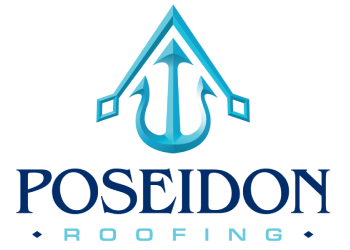Introduction:
As a homeowner, one of the most critical components of your property is the roof. It protects you and your family from the elements and ensures the structural integrity of your home. Over time, however, wear and tear can take a toll on your roof, eventually requiring a replacement. But how do you know if it’s time to invest in a new roof? In this blog post, brought to you by Poseidon Roofing, a trusted residential and commercial roofing company serving Naples, FL, we will provide you with expert guidance on identifying the signs that indicate the need for a new roof.
1. Age of Your Roof:
The age of your roof is often the first indicator of whether or not it needs to be replaced. Different roofing materials have varying lifespans. For example, asphalt shingle roofs typically last around 20 to 25 years, while metal or tile roofs can endure for several decades. If your roof is approaching or exceeding its expected lifespan, it may be time to consider a replacement.
2. Damaged Shingles:
Inspecting the condition of your shingles is another crucial step in determining if you need a new roof. Look for signs of damage such as cracked, curled, or missing shingles. Also, check for excessive granule loss in asphalt shingles, as this indicates their deterioration. If you notice a significant number of damaged shingles across your roof, it’s a clear sign that replacement is necessary.
3. Leaks and Water Damage:
Water leaks or stains on your ceiling are obvious red flags that your roof requires attention. If you’ve been experiencing recurring leaks, even after repairs, it may be an indication of a larger underlying issue. Water damage can lead to mold growth and compromise the structural integrity of your home. In such cases, consult a professional roofing company like Poseidon Roofing to assess the extent of the damage and recommend the appropriate solution.
4. Sagging Roof:
A sagging roof is a severe issue that requires immediate attention. It typically indicates structural problems, such as weakened rafters or underlying water damage. If you notice any noticeable dips or sags in your roofline, contact a licensed roofing contractor like Poseidon Roofing right away to assess the situation and determine if a new roof is necessary.
5. Energy Efficiency:
An old or deteriorating roof can impact the energy efficiency of your home. If you’ve noticed a significant increase in your energy bills or if your home feels excessively hot or cold, it could be due to poor insulation caused by a failing roof. Upgrading to a new, energy-efficient roof can help regulate indoor temperatures and reduce your energy costs in the long run.
When it comes to your roof, it’s essential to stay proactive and address any signs of deterioration promptly. By keeping an eye out for the aforementioned signs like age, damaged shingles, leaks, sagging, and energy efficiency, you can determine whether it’s time to invest in a new roof. Remember, always consult with a professional roofing company like Poseidon Roofing, serving Naples, FL, to assess your roof’s condition accurately and provide expert guidance on the best course of action.
For more information about roof repairs or to explore our services, please visit Poseidon Roofing’s website poseidonroof.com Our team of residential roofing experts and licensed roofing contractors in Naples, FL, is ready to assist you with all your roofing needs.

